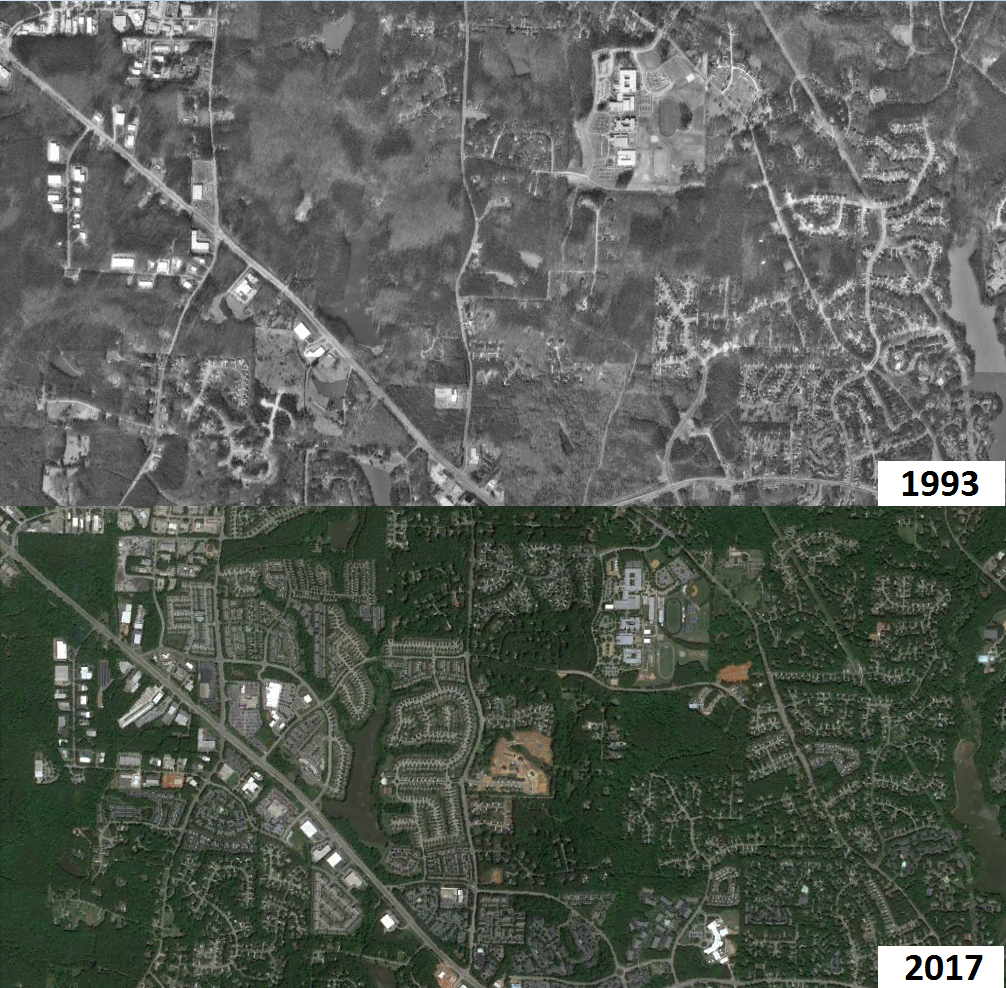
Like it or not, Leesville and Raleigh are changing. New construction projects such as the Publix on Leesville and a number of new high rises in downtown are just a sample of what’s to come.
Change is not a new thing to Leesville, and the Raleigh area at large. I was in the group of people that first inhabited one of the suburban, cookie-cutter communities that popped up in Leesville before the housing crash in 2008. In the fourteen years that I’ve been here, the community has changed dramatically.
Since the construction of the Leesville Road schools in the early ‘90s, the area around them has exploded. Leesville, one of the twenty townships within Wake County, had a population of 41,850 in 2010 and has grown by roughly 40% since 2000 according to the 2010 United States Census
More out-of-towners, both from North Carolina and from further afield, have flooded the area. Even my parents are victim to the people-magnet that is Raleigh, coming here from Maryland back in the 1990s. Reasons for coming to the area varied: better climate, better job opportunities, and better schools were some of the major draws.
A lot of that change has been positive. New people means new ideas, new perspectives, new businesses, and increased possibilities. For example, Downtown Raleigh used to be lacking in terms of entertainment venues and restaurants. The ones that were present would often close ridiculously early, sometimes as early as five or six o’clock.
However, due to the influx of young people who demanded a more lively downtown, Raleigh’s center blossomed. Without this renaissance, we wouldn’t have places like Beasley’s or the Boxcar and things like Wide Open Bluegrass would have passed over Raleigh and gone somewhere else.
New major projects such as the Marbles Museum (opened in 1999) and the Raleigh Convention Center (completed in 2008) have helped facilitate this growth and brought more visitors and residents (and by extension, their money) to Raleigh.
While the influx of people has brought new ideas and perspectives to the area, it also brought a crisis of overpopulation. Roads, even those that would be considered backroads, in the area are often clogged with traffic around rush hour, and area schools are experiencing overcrowding. Despite Raleigh’s massive population growth, no new high schools have been built since 1999. While the issue isn’t as catastrophic as it could be (According to the SAS Institute’s report card for Wake County, class size is still below average for high school freshman and seniors in the district), it’s still something that could cause major problems in the future.
Overall, I’d say that the changes that Raleigh has experienced over the past few decades have been, on the whole, positive. Despite issues like overcrowding, newcomers and new businesses bring money to Raleigh, something it could stand to gain. More money means new innovations, not just in business but in public infrastructure. We wouldn’t be completing the I-540 loop or building a decent train station if it weren’t for all of the new people coming to Raleigh. Raleigh’s future is bright, but there are many problems we will have to deal with in order to keep it that way.
[…] February 16, 2018 | The Changing Faces of Leesville and Raleigh […]